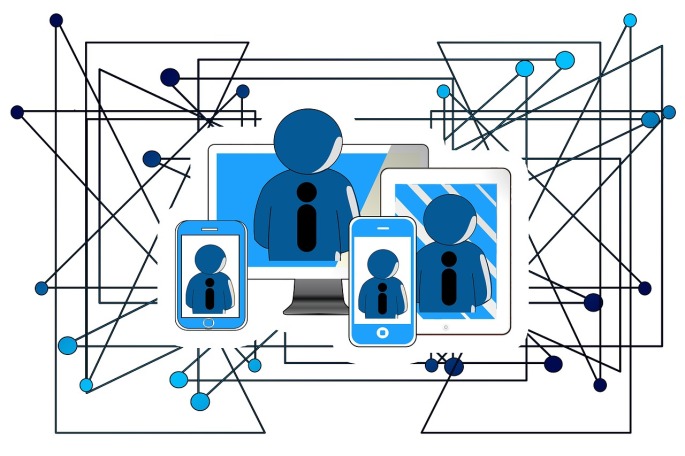With the expectations of B2B buyers increasingly shaped by their consumer behavior in the B2C realm, it’s time for B2B businesses to take a closer look at the kind of user experience they’re delivering online. The fact is that B2B businesses can no longer afford to fall short when it comes to the user experience. Sophisticated B2B buyers will simply take their custom elsewhere if a B2B seller – or, more specifically, their online e-commerce platform – does not measure up to the customer-centric standards that major B2C sellers like Amazon have mastered.
So how can B2B businesses capitalize on this opportunity to better serve their customers by designing and delivering a quality user experience? Keeping these nine best practices in mind is a great place to start.
-
Ease of navigation

Businesses might be tempted to get fancy with a website’s appearance or features. However, it’s vital not to overlook the main reason why buyers have come to the site in the first place: to find or research a particular product or service. That means that the top priority for a B2B e-commerce site is to make it easy for visitors to find what they are looking for. Navigation features like hierarchical product categories and product filters are obvious but essential elements here.
-
Intuitive search features
Another user-friendly element that makes it even easier for visitors to navigate a B2B website is the use of intuitive search features. Autocompletion can increase the power of a user’s search significantly. Incorporating common product synonyms in descriptions ensures that no search falls short because of language differences. Ranking results by popularity helps deliver the most relevant information quickly.
-
Superior product images
B2B buyers not only want to find what they’re looking for easily, they want to see it as well, preferably in a manner that’s as representative of real life as possible. This not only means ensuring that users can zoom in on product photos and view multiple images of the product from a variety of angles, it also means including images of the product in real-world settings to provide much-needed context.
-
A variety of shipping options
Despite the fact that shipping is a key determination in the success of a B2B transaction, it’s an element that many B2B businesses tend to overlook. The most important best practice here is to offer numerous options to satisfy different customer needs.

Some customers will prioritize discounted or free shipping (particularly once a certain spend threshold is reached). Others are prepared to pay extra if that means they will receive their product faster. Still others focus on shipping options that give the customer added control, like the possibility for deliveries after business hours.
-
Real-time product availability
Timing plays a major role in B2B e-commerce transactions. Seeing that product stock is down to its last few items increases the customer’s sense of urgency and reduces decision-making delays. Simultaneously, it helps manage customer expectations and increase communication and transparency.
Even when products are out of stock, it’s still possible to deliver a great user experience. For example, try allowing users to sign up for an automatic notification that will alert them when the desired product is back in stock.
-
Flexible payment options
B2B businesses can greatly increase their chances of making a sale – and help make things easier for their buyers – by offering numerous options for accepting payments. This is especially important in the B2B realm, as B2B buyers often require purchase approval from more than one source and may be making purchases from multiple accounts.
B2B e-commerce sites need to be able to easily provide invoices and purchase orders, and to accept payment via check, credit card, or third-party options like PayPal or Google Wallet. It can also be useful to provide regular clients with a corporate account.
-
Wholesale pricing
Given the varying needs of B2B buyers, having a back-end that is optimized for transactions at both the retail and the wholesale level is an absolute must for B2B e-commerce platforms. Some of the most important features to include here are personalized pricing options according to sales volume as well as custom logins for buyers and pricing options based on those logins.
-
Custom discounts
According to research from Bain & Company, pricing is the single most important factor in determining a B2B company’s profits. As a result, B2B businesses need to pay careful attention to the complex issue of how their products are priced for each customer.

Custom discounts can make an important contribution to a B2B business’ bottom line. Try including introductory pricing for new clients, volume discounts that incentivize large purchases, and legacy pricing to reward and retain long-term customers.
-
The human touch
B2B buyers don’t want to make purchases from a faceless corporation, they want to feel like they are buying products from real people. To bring this element of human connection to the B2B space, B2B businesses need to be very deliberate in how they communicate with their customers. Reducing the use of jargon and replacing it with genuine messaging can go a long way in helping B2B buyers feel like they’re dealing with people and not a robot.









 Cybersecurity already has a zero percent unemployment rate, and that talent shortage is only expected to grow as the field evolves and the need for new skill sets arises. Data management in particular will become a significant challenge. The next three to five years alone will see organizations generating more data than they ever have before, and that unprecedented volume of information will require highly specialized handling. The need for new skills in data science and analytics will continue to grow, and the industry’s major concerns will include areas like data classes,
Cybersecurity already has a zero percent unemployment rate, and that talent shortage is only expected to grow as the field evolves and the need for new skill sets arises. Data management in particular will become a significant challenge. The next three to five years alone will see organizations generating more data than they ever have before, and that unprecedented volume of information will require highly specialized handling. The need for new skills in data science and analytics will continue to grow, and the industry’s major concerns will include areas like data classes, 




 Digital transformers—These traditional businesses have successfully evolved to take advantage of emerging technologies; for the most part, they are creating new sources of value for their customers and are implementing competitive strategies that may take them beyond conventional industry boundaries. Companies like Burberry, L’Oréal, and Ford are good examples of digital transformers.
Digital transformers—These traditional businesses have successfully evolved to take advantage of emerging technologies; for the most part, they are creating new sources of value for their customers and are implementing competitive strategies that may take them beyond conventional industry boundaries. Companies like Burberry, L’Oréal, and Ford are good examples of digital transformers. Augmented and virtual reality—Augmented reality (AR) is a process by which digital information and experiences are layered on top of the physical world, while virtual reality (VR) goes one step further, creating a completely new, interactive digital environment. AR in particular has strong potential to dramatically alter the customer experience, especially in retail environments. For example, the home improvement retail chain Lowe’s recently released an AR “mapping” app that helps customers search for products, add them to a shopping list, and then easily navigate their way through the store to find and collect the items.
Augmented and virtual reality—Augmented reality (AR) is a process by which digital information and experiences are layered on top of the physical world, while virtual reality (VR) goes one step further, creating a completely new, interactive digital environment. AR in particular has strong potential to dramatically alter the customer experience, especially in retail environments. For example, the home improvement retail chain Lowe’s recently released an AR “mapping” app that helps customers search for products, add them to a shopping list, and then easily navigate their way through the store to find and collect the items.









 Hosted by Cisco in late May 2017, the fourth installment of the
Hosted by Cisco in late May 2017, the fourth installment of the 